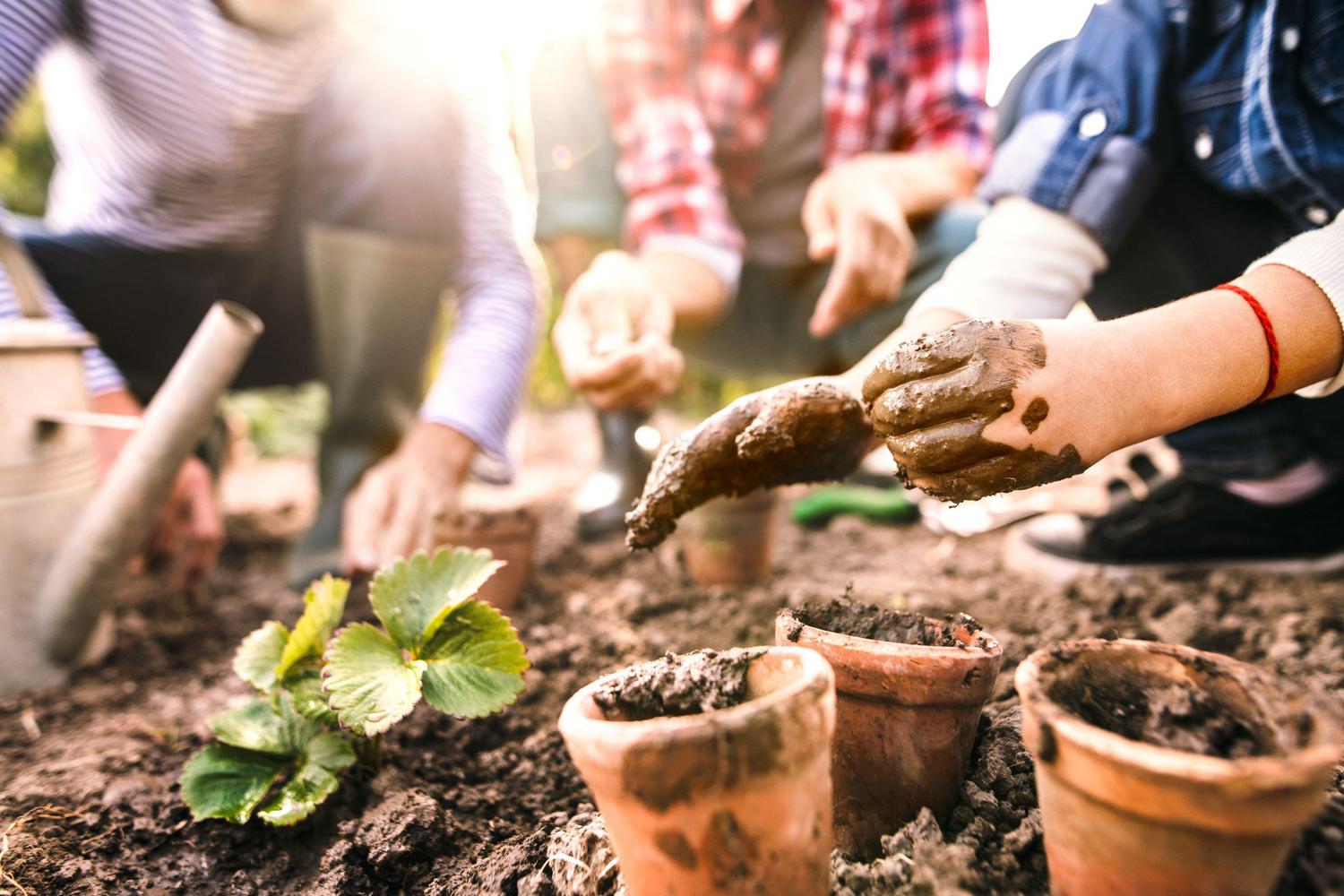Gardening is a great way to get kids excited about nature and the outdoors, keeping them entertained and away from screens! Through gardening kids can be introduced to the concepts of science, maths, nutrition and sustainability – even better, it can be calming and therapeutic for young minds.
Many preschools now have their own kitchen gardens, where children can get involved in planting, tending to and harvesting fresh fruit, herbs and vegetables. Its a testament to the advantages gardening has for growing minds and bodies.
But gardening need not be limited to school curricula. With a little creativity and planning, everyone can grow at least a few edible plants at home. Not only does it get kids interested in nature, food and where it comes from, but it can also be an effective tool in enhancing their learning in other areas.
Related Articles
Benefits of Gardening
Sensory exploration: Children are tactile, sensory learners and gardens engage all the senses there are flowers and herbs to smell; colours, bugs and fruits to see; textures of leaves, bark and soil to feel; sounds of bees and birds to listen for and, of course, delicious fresh produce to smell and taste.
Physical: In an age when so much free time is sedentary and screen-based, a gardening project can tempt youngsters away from their devices and get them engaged in a physical activity. Most toddlers and preschoolers instinctively love messing around in the dirt and time in nature is a well know stress reliever. The act of digging, mulching, filling and carrying water cans and using simple garden tools is also a great way to get them moving and develops gross and fine motor skills.
Healthy eating: In addition to the well-documented therapeutic effects of spending time in nature, gardening is a great way to boost kids health and nutrition: they are more likely to want to eat vegetables and herbs if theyve been involved with the growing process, so its a great way to introduce fresh produce into their diet and nurture a love of fruit and vegetables.
Mental health: Gardening has been shown to promote emotional and mental wellbeing, as well as help reduce stress and anxiety in children. Achievements in the garden can help give kids a sense of pride and empowerment away from the academic setting of a classroom. It is said that even small doses, such as five minutes in nature, are considered to improve self-esteem and mood.
Responsibility: Gardening is also an effective way to teach children responsibility (and far less of a commitment than getting a pet!). As long as they remember to water and weed their plants, their little charges will thrive – but if they forget, they will soon see them wilt or become choked with weeds. It’s an easily digested lesson in cause and effect.
Quality time: Life's often a whirlwind of work, school drop-offs, and a never-ending list of tasks at home. However, among the chaos, gardening offers a tranquil retreat—a chance to pause, focus, and savour a mindful activity free from distractions. It's an ideal opportunity to bond with your child and enjoy life's simple pleasures.
Helpful Tip
The new Children’s Garden at the QE II Botanic Park is an incredible outdoor resource for children, with a grow zone, sensory garden, water feature, playground and much more!

Supporting STEM Learning
Studies have shown that in schools with gardens, students' test pass rates increased by an average of 12-15%. Growing plants presents invaluable learning opportunities and helps children to apply STEM (science, technology, engineering and maths) concepts to the real world.
Science: The simple act of germinating seeds, watching them grow, bear fruit and go to seed, illustrates the botanical life in real time. Flowers can be examined to identify their different parts and seed pods opened to reveal their contents and simple experiments conducted to compare what happens when a plant does or doesnt receive sunlight or water.
As children grow older, gardens present opportunities to identify and catalogue bugs, observe their behaviour and study the effects of the weather on crops.
Technology: If we understand technology as anything man-made, gardening can be used to make children think about how simple tools like rakes, trowels, shovels and wheelbarrows make our lives easier. Ask them which tool might make digging a big hole faster? What would be the best way to get water to the plants? What could they use to move heavy things around the garden?
Engineering: Designing and building a garden bed introduces youngsters to engineering concepts how will they reach the plants in the middle of the garden? Will paths or stepping stones be needed? What happens when plants get too tall to bear their own weight? How can we support them? Do tomatoes need the same shape support as sunflowers? How could we build this?
Mathematics: From the simplest task of counting or sorting seeds into different shapes and sizes, to more advanced mathematical calculations, gardening can be used to practise simple sums and multiplications. If each tomato plant bears 20 tomatoes, how many do we need to plant to get 100 tomatoes? If we have five rows of cucumbers, with six plants in each row, how may cucumber plants do we have in total? As childrens Maths learning progresses, this can expand to calculating costs, profits and percentages.

Setting up a Garden at Home
Whether you have space to create a vegetable patch for kids, a terrace where you can create a container garden or nothing more than a windowsill, there are plenty of ways to get children to experiment with growing some edible plants at home.
The growing season in Cayman runs from approximately October to April after that the weather is too hot for most edibles, unless you can offer them some shade.
Planning a Vegetable Patch
If you have the space to build a kitchen garden, discuss the best location, in terms of wind, sun, water and aesthetics, with your children.
If you live near the coast, remind them that the salt spray can be fatal for plants, so together you will need to identify the most sheltered spot available. In dry periods, the garden will need to be watered can a garden hose reach?
For best results, most plants need at least half a day, if not a full day, of sunshine: have them observe how the shade moves across the space in the course of the day. Good drainage is also essential, so that after heavy rain, vegetables aren't sitting in standing water. If there is no suitable elevated spot, consider having elevated grow boxes made (inexpensive grow box kits can also be purchased online).
Ideally, you want your children to take ownership of their garden and be responsible for it. But bear in mind, this could result in a messy, unruly scene, so think about whether you want to see it from your deck or pool, or if it would be better tucked away out of sight.

Container Gardening
If you don't have a garden, you can still grow things in pots or in raised garden beds on a terrace or balcony. Raised garden beds can be bought at A. L. Thompson's and ceramic pots are sold at Vigoro Garden Centre. Alternatively, almost any container that you can make drainage holes in the bottom of will work think used wine crates, gallon water bottles with the top cut off, empty food cans or even tyres filled with soil. Pots work best for single plants that bear multiple fruits, like tomatoes, but potatoes, pumpkins and carrots will need to go straight in the ground.
Windowsill Growing
When all you have is a windowsill or two, there are still things kids can plant and observe the growth process. Try submerging a regular or sweet potato halfway in a jar of water: in a matter of days roots and shoots will start growing. The same can be done with avocado stones, but they take longer to sprout. Beans and lentils can also be sprouted in clear jars covered with cheese cloth and are great added to salads and sandwiches.
When the kids eat an apple or orange, have them pick out the pips and place them on damp cotton wool and wait for them to germinate. Alternatively, plant different herbs (or arugula) in small pots and simply snip off what you need and watch it grow back.
Best Crops to Grow in Cayman
In the ground: Mangoes, bananas, carrots, radishes, pumpkins, bok choy, leafy greens, mustard greens
In pots: Tomatoes, cucumbers, eggplant, seasoning peppers, scotch bonnets, basil, cilantro, rosemary, chives, thyme.
On window sills: Herbs, arugula, bean sprout, lentil sprouts, basil and you can sprout an avocado seed.

Pollinators & Pests
With children involved you'll want to avoid any toxic pesticides, herbicides and fertilisers. Unfortunately, this does leave plants susceptible to a host of problems, so ask at a garden centre for safe, organic alternatives.
Another way to boost your garden naturally is to include plants to attract beneficial bugs and deter harmful ones. Marigolds, trumpet vine, honeysuckle, lantana and sea lavender are just some of the plants that will bring in essential pollinators like bees and butterflies, while cilantro, chives, yarrow and marigolds all help to entice the ladybirds, who will eat aphids for you.
Iguanas are also a perennial problem and eat most crops, unfortunately. Chickens and Whistling Ducks can also be a huge problem as they dig around in the soil and the latter love to eat lettuce, herbs and other greens. The easiest way to protect your plants is to build a screen around your vegetable patch.
Not all plants will thrive in all locations or soil types. Some crops may be decimated by pests or inclement weather. Others will produce bumper crops. It will take time to work out what grows in your particular garden and what does not. But thats what gardening is all about: trial and error, making mistakes and learning from them. What better way to cultivate inquisitive, analytical minds?
Birds & Insects to Spot in Your New Garden
Grab your magnifying glass and binoculars, and set off on an animal search around your new garden! Children can practise their writing skills by recording the animal's name and describing its features and behaviours.

Blue-throated Anole:
These small lizards are endemic to Grand Cayman. The males are a vibrant turquoise hue, while females display a more subdued grey, however both sexes can also change their colours. These creatures can be found on the ground and in trees where they eagerly gorge on insects.
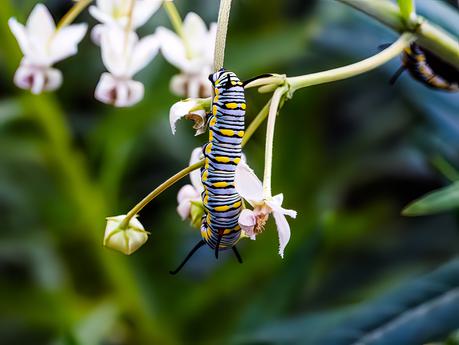
Caterpillars:
While some may consider them pests due to their leaf-nibbling habits, caterpillars actually offer a great opportunity to observe their fascinating life cycle. Check on them daily as they grow plumper and eventually form a chrysalis—remember to look and not touch! After about two weeks, a beautiful butterfly will emerge!

Cayman Butterflies:
Cayman is home to over 60 butterfly species, so keep your eyes peeled for these colourful creatures as they flutter around your garden. Common species to look out for include the chestnut brown ‘Danaus gilippus’, the bright orange ‘Dryas Iulia’ and the ‘Great Southern White’, which emerge in their thousands for mating season, creating a beautiful tropical snowstorm effect.
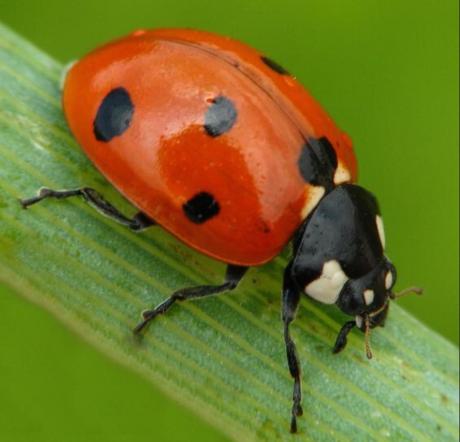
Ladybirds:
Known for their vibrant red and black wing spots, these insects belong to the beetle family. They are great for the garden as they love to feast on aphids, a sap-sucking insect that eats other plants.
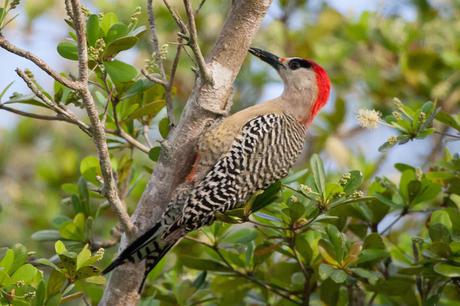
West Indian Woodpecker:
Do you hear a loud pecking sound outside? Chances are that it’s a West Indian Woodpecker, easily spotted with its bright red crown. They can often be seen working their way around tree trunks in search of insects and tree frogs.
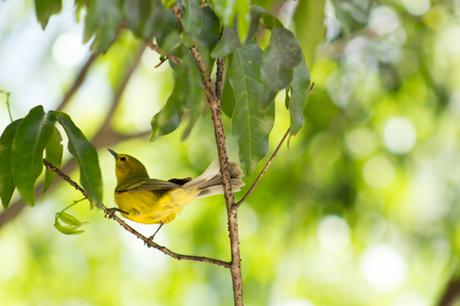
Yellow Warbler:
Spot these bright yellow songbirds, known for their boldness and tendency to settle near you if you remain still. They enjoy grazing on bugs and occasionally sipping nectar. These charming little birds are a delight to see and hear in your garden, using their sweet voices to chat with their friends.
The National School Garden Programme
The Cayman Islands Ministry of Planning, Agriculture, Housing, Infrastructure, Transport and Planning have developed the 'Cayman Islands Food and Nutrition Security Policy' whereby they have created a the National School Garden Programme whereby they are doing the following:
Empowering Education: They enable schools to create and maintain vibrant vegetable gardens that enhance students' learning experiences and encourages healthy eating.
Hands-on Learning: The programme engages hundreds of students in practical agricultural activities, teaching them about plant biology, ecology and sustainability.
Consistent Support: The Ministry has allocated CI$30,000 per cycle, with CI$1,000 for primary schools and CI$1,500 for high schools annually, to ensure the success and growth of school gardens.
Future Expansion: The programme is being evaluated to potentially include enthusiastic private schools, broadening its impact and reach. The Ministry encourages all schools to contact the Ministry for more information. Visit www.gov.ky/pahi or call (345) 244 2412.

